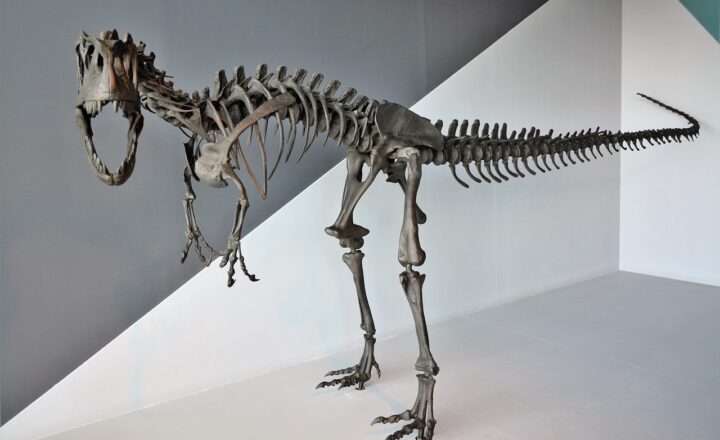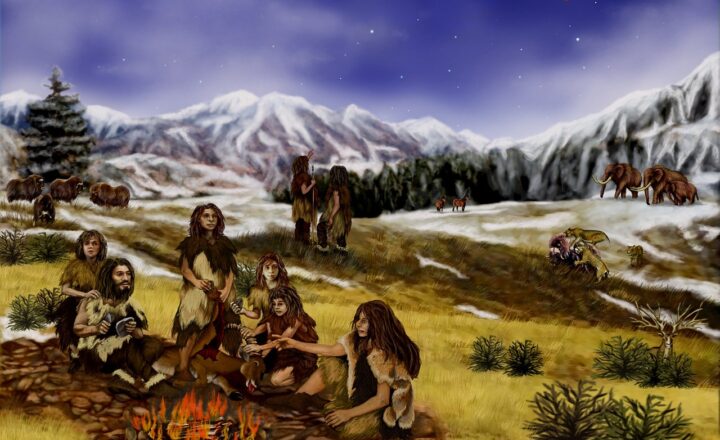Exploring the Velociraptor: Fierce Hunter or Clever Scavenger?
November 14, 2024

The Velociraptor, a small but notorious dinosaur, has captured the imagination of paleontologists and the general public alike. Famously portrayed in popular culture as a ferocious predator, the reality of the Velociraptor’s behavior and ecological role may not be as straightforward as it seems. This article aims to delve deep into the life of the Velociraptor, examining its hunting strategies, social behavior, and the fertile ground of myths and facts surrounding this iconic creature.
1. The Origin of Velociraptor
The Velociraptor lived approximately 75 to 71 million years ago during the Late Cretaceous period in what is now Mongolia. It belonged to a group known as dromaeosaurids, characterized by their long claws and ferocious nature. The name “Velociraptor” translates to “swift thief,” a nod to its perceived speed and predatory skill. Fossil evidence shows that Velociraptors were about the size of a turkey, generally measuring around 1.8 meters (6 feet) long and weighing approximately 15 kilograms (33 pounds).
However, the image we often associate with Velociraptors has been heavily influenced by Steven Spielberg’s film adaptation in “Jurassic Park,” where they were depicted as large, intelligent killers. In truth, the actual Velociraptor was significantly smaller and likely had feathers or proto-feathers, similar to many birds today.
2. Physical Characteristics and Adaptations
The Velociraptor had a slender, lightweight build, allowing for agility. Its long, curved claws were not only useful for grasping prey but also could have served defensive purposes against larger predators. Evidence suggests that Velociraptor had a relatively large brain compared to body size, indicating a degree of intelligence uncommonly found among reptiles. Let’s break down some of its notable physical characteristics:
- Feathers: Recent discoveries suggest that Velociraptor had feathers, indicating that it may have been warm-blooded and possibly able to glide or fly short distances, although its primary mode of locomotion was likely running.
- Flexible Jaws: Velociraptor’s jaws were equipped with sharp, serrated teeth, allowing them to tear flesh effectively. This dental structure suggests that they were well adapted for a carnivorous diet.
- Keen Senses: Many scientists theorize that Velociraptors had keen eyesight and sensitive hearing, important traits for both hunting and scavenging activities.
These adaptations made Velociraptor a formidable creature in its environment, though its small size indicates it may have also relied on cunning and strategy, much like modern birds of prey.
3. Hunting Strategies: Predator or Scavenger?
One of the pivotal questions regarding Velociraptor’s lifestyle is whether it was primarily a hunter or a scavenger. While some paleontologists tout it as a fierce predator, others suggest it may have scavenged on the remains of dead organisms, similar to modern-day vultures.
Hunting Behavior:
Research suggests that Velociraptors may have hunted in packs, allowing them to take down larger prey through coordinated attacks. Fossil evidence has implied that they targeted dinosaurs that were larger than themselves, which is indicative of a pack-hunting strategy. Their sharp claws could have been used effectively to grip and hold onto prey, while their serrated teeth were perfect for tearing through flesh.
Scavenging Behavior:
On the flip side, the concept of scavenging cannot be overlooked. With their smaller stature, Velociraptors may have had to compete with larger predators and thus scavenging could have been a viable alternative for survival. They likely took advantage of kills made by larger dinosaurs, supplemented by occasional hunting of smaller prey.
Understanding the dual nature of Velociraptor’s behavior provides a richer perspective on its ecological role. It demonstrates that these creatures were opportunistic, adapting their behavior based on environmental demands and available resources.
4. Social Behavior: Pack Hunters or Solitary Creatures?
The social dynamics of Velociraptors remain a hot topic among researchers. Evidence from fossils indicates that some theropods may have engaged in cooperative behaviors when hunting. Such behavior could suggest a more complex social structure than previously assumed.
Fossilized remains of multiple individuals found in close proximity may support the idea that Velociraptors could have lived and hunted in packs. Cooperative pack hunting could play a crucial role in taking down larger prey, supporting a social structure and hierarchy within groups, reminiscent of modern-day wolves or lions. However, the social interactions, communication methods, and pack structures remain largely speculative owing to the limited fossil record.
In contrast, some researchers emphasize that Velociraptors may have engaged in solitary hunting depending on ecological circumstances or prey availability. This aspect of their biology enhances the complexity of their lifestyle, highlighting adaptability and strategic behavior in various circumstances.
5. The Velociraptor in Popular Culture
The Velociraptor’s portrayal in popular culture has greatly influenced public perception of dinosaurs. The infamous scenes in “Jurassic Park” created an image of the Velociraptor as a nearly intelligent carnivorous beast, capable of teamwork and cunning traps. However, this representation is often a mix of artistic license and exaggerated traits.
Despite this, such portrayals have sparked immense interest in paleontology and have led to a greater appreciation of these ancient creatures. They prompt inquiry and discourse, encouraging enthusiasts to explore further into the authentic life of Velociraptor and its contemporaries.
Scientists and enthusiasts alike have grappled with the line between fact and fiction, striving to understand the dinosaur’s real behaviors against its larger-than-life cinematic presence. Such conversations contribute to a richer understanding of both paleontology and how these creatures fit into the broader narrative of life on Earth.
Conclusion
In conclusion, the Velociraptor remains one of the most fascinating and misunderstood dinosaurs in history. While often depicted as a fierce predator, its true life may have involved behaviors of both a clever scavenger and a strategic hunter. Its physical adaptations, social behaviors, and the myths surrounding it create a complex portrait of survival and adaptation in a world that was vastly different from today.
As we continue to uncover new fossil evidence and refine our understanding of Velociraptor’s life, it’s crucial to remember that art and science can coexist. They complement each other in our pursuit of knowledge, inspiring us to explore the hidden secrets of our planet’s past. Whether a feared predator or a cunning scavenger, the Velociraptor will always hold a special place in the realm of prehistoric life.






